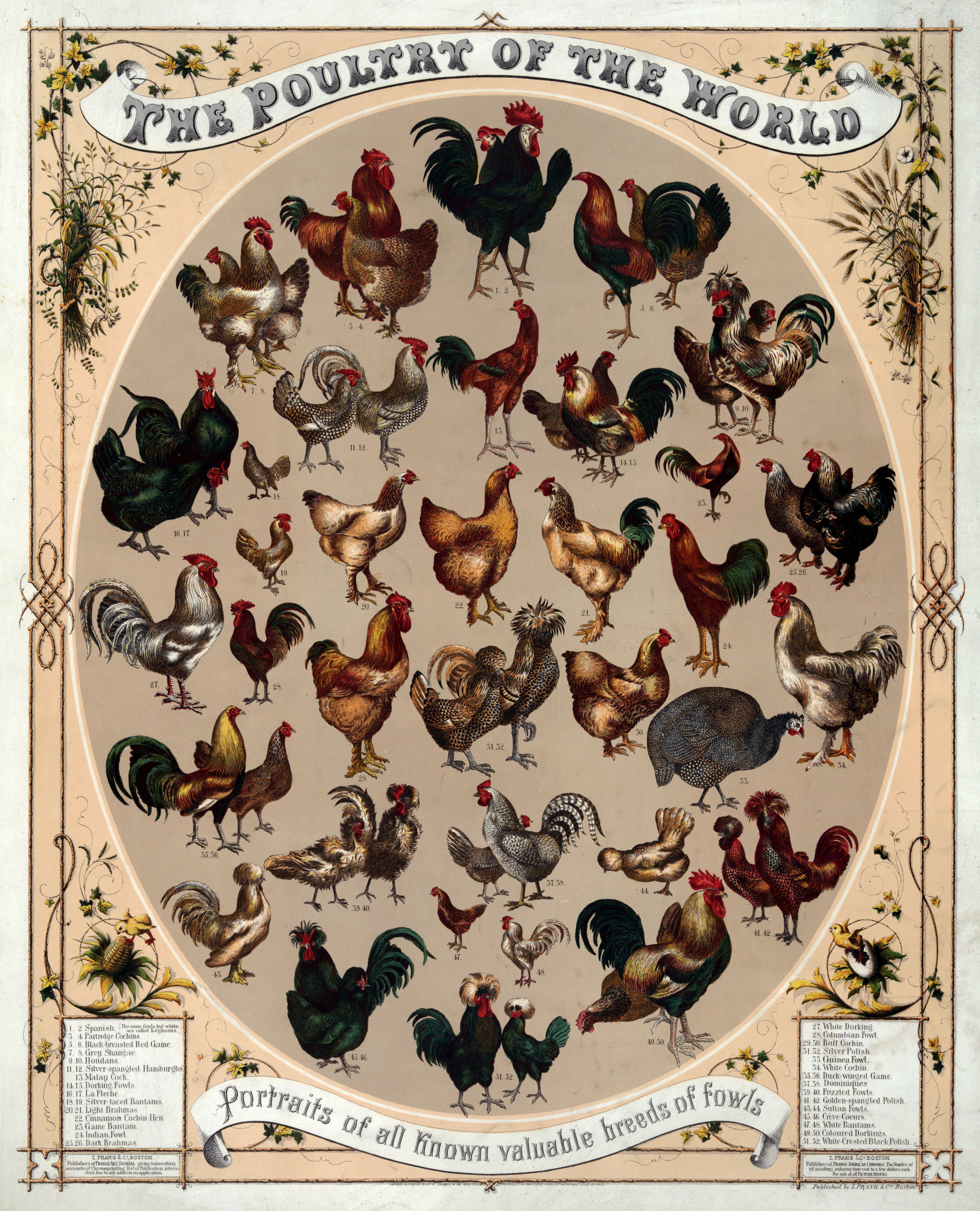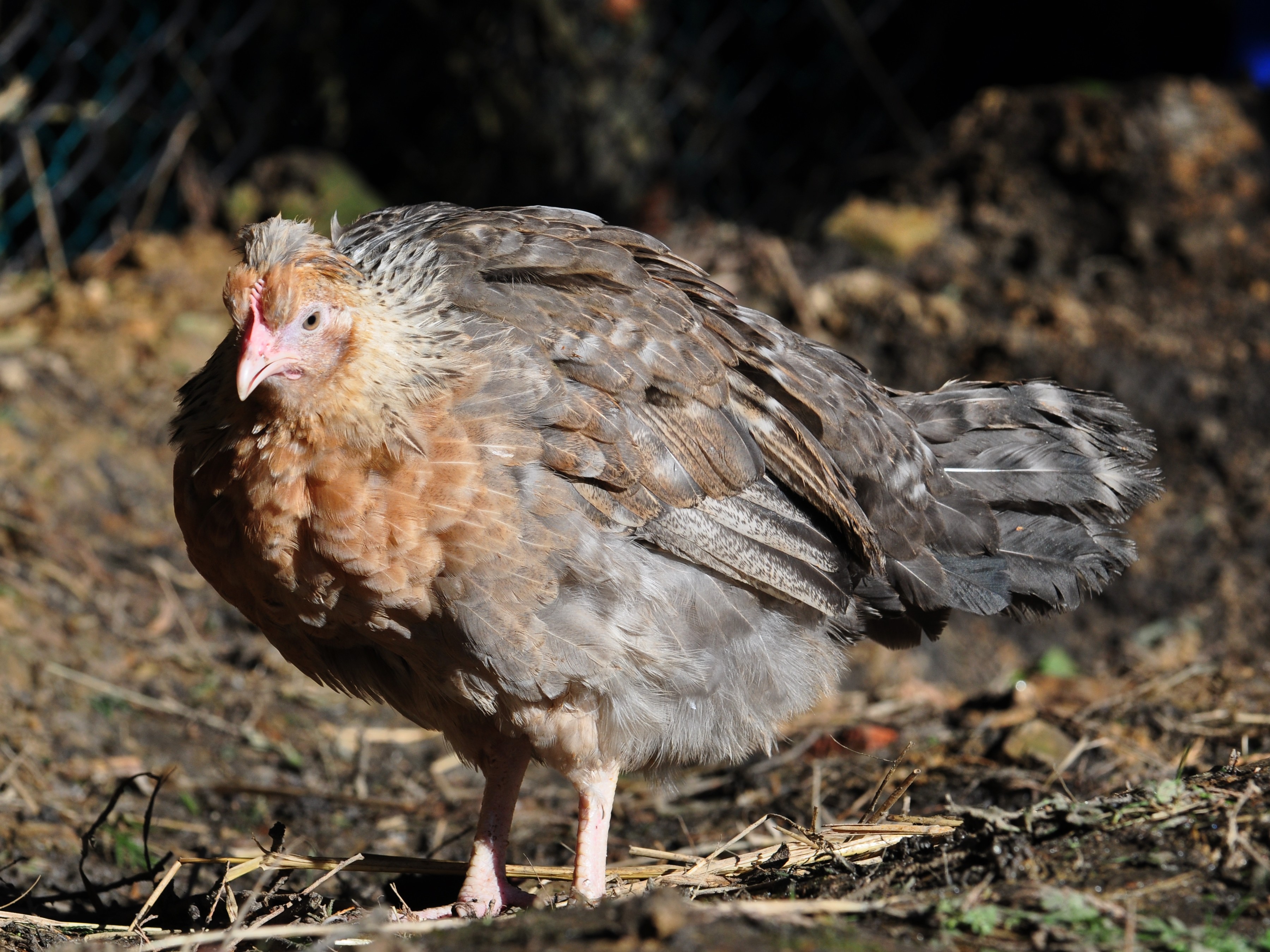|
Polbar
The Polbar is a breed of chicken from Poland. It was created between 1946 and 1954 by Laura Kaufman, who crossed the native Polish Green-legged Partridge breed with American Plymouth Rock birds. The aim was to introduce the barred gene of the Plymouth Rock to make chicks auto-sexing – female chicks can be distinguished from males at one day old by the longer black eye-stripe. There is one Polbar flock in Poland, at the Laura Kaufman Research Station of the University of Life Sciences of Lublin Lublin is List of cities and towns in Poland, the ninth-largest city in Poland and the second-largest city of historical Lesser Poland. It is the capital and the centre of Lublin Voivodeship with a population of 336,339 (December 2021). Lublin i ..., in the eastern part of the country. It is kept for conservation only. At the end of 2014 there were 1100 birds. References {{reflist, 45em, refs= {{cite book , chapter=Annex: Breeds currently recorded in the Global Databank for Ani ... [...More Info...] [...Related Items...] OR: [Wikipedia] [Google] [Baidu] |
List Of Chicken Breeds
There are hundreds of chicken breeds in existence. Domesticated for thousands of years, distinguishable breeds of chicken have been present since the combined factors of geographical isolation and Selective breeding, selection for desired characteristics created regional types with distinct physical and behavioral traits passed on to their offspring. The physical traits used to distinguish chicken breeds are size, plumage color, Comb (anatomy), comb type, skin color, number of toes, amount of feathering, Egg (biology), egg color, and place of origin. They are also roughly divided by primary use, whether for eggs, meat, or ornamental purposes, and with some considered to be dual-purpose. In the 21st century, chickens are frequently bred according to predetermined breed standards set down by governing organizations. The first of such standards was the British Poultry Standard, which is still in publication today. Other standards include the Standard of Perfection, the Australian Po ... [...More Info...] [...Related Items...] OR: [Wikipedia] [Google] [Baidu] |
Auto-sexing
Auto-sexing breeds of poultry are those in which the sex of newly-hatched chicks can be determined from the colour and markings of the down (feather), down. Some breeds of chicken, of domestic goose, goose and of domestic pigeon have this characteristic. The idea of such a breed is due to Reginald Punnett, who created the first auto-sexing chicken breed, the Cambar, at the Genetical Institute in Cambridge in 1928. Mechanism Unlike sex linkage, sex-linked hybrids, such as sex link, 'red sex-links' or 'black sex-links', the Legbar is an auto-sexing breed. Several other auto-sexing breeds or auto-sexing varieties of breeds exist, such as Plymouth Rock, Bielefelder Kennhuhn, Niederrheiner, and Norwegian Jærhøns. Most breeds that end with -bar, such as Welbar, Rhodebar, Brussbar or Wybar, are auto-sexing as well. The importance that auto-sexing plays in the Legbar breed is also reflected in the fact that, next to a standards for the adult birds, the down colour and patterns a ... [...More Info...] [...Related Items...] OR: [Wikipedia] [Google] [Baidu] |
Chicken Breeds
There are hundreds of chicken breeds in existence. Domesticated for thousands of years, distinguishable breeds of chicken have been present since the combined factors of geographical isolation and selection for desired characteristics created regional types with distinct physical and behavioral traits passed on to their offspring. The physical traits used to distinguish chicken breeds are size, plumage color, comb type, skin color, number of toes, amount of feathering, egg color, and place of origin. They are also roughly divided by primary use, whether for eggs, meat, or ornamental purposes, and with some considered to be dual-purpose. In the 21st century, chickens are frequently bred according to predetermined breed standards set down by governing organizations. The first of such standards was the British Poultry Standard, which is still in publication today. Other standards include the Standard of Perfection, the Australian Poultry Standard, and the standard of the America ... [...More Info...] [...Related Items...] OR: [Wikipedia] [Google] [Baidu] |
Chicken
The chicken (''Gallus gallus domesticus'') is a domesticated subspecies of the red junglefowl (''Gallus gallus''), originally native to Southeast Asia. It was first domesticated around 8,000 years ago and is now one of the most common and widespread domesticated animals in the world. Chickens are primarily kept for chicken as food, their meat and egg as food, eggs, though they are also kept as pets. As of 2023, the global chicken population exceeds 26.5 billion, with more than 50 billion birds produced annually for consumption. Specialized breeds such as broilers and laying hens have been developed for meat and egg production, respectively. A hen bred for laying can produce over 300 eggs per year. Chickens are social animals with complex vocalizations and behaviors, and cultural references to chickens, feature prominently in folklore, religion, and literature across many societies. Their economic importance makes them a central component of global animal husbandry and agricu ... [...More Info...] [...Related Items...] OR: [Wikipedia] [Google] [Baidu] |
Crossbreeding
A crossbreed is an organism with purebred parents of two different breeds, varieties, or populations. A domestic animal of unknown ancestry, where the breed status of only one parent or grandparent is known, may also be called a crossbreed though the term "mixed breed" is technically more accurate. Outcrossing is a type of crossbreeding used within a purebred breed to increase the genetic diversity within the breed, particularly when there is a need to avoid inbreeding. In animal breeding, ''crossbreeds'' are crosses within a single species, while '' hybrids'' are crosses between different species. In plant breeding terminology, the term ''crossbreed'' is uncommon, and no universal term is used to distinguish hybridization or crossing within a population from those between populations, or even those between species. Crossbreeding is the process of breeding such an organism. It can be beneficially used to maintain health and viability of organisms. However, irresponsible crossbre ... [...More Info...] [...Related Items...] OR: [Wikipedia] [Google] [Baidu] |
Green-legged Partridge
The green-legged partridge (''Tropicoperdix chloropus''), also known as the scaly-breasted partridge or green-legged hill-partridge, is a bird species in the family Phasianidae. It is found in forest in Indochina, ranging slightly into southernmost China (Yunnan Yunnan; is an inland Provinces of China, province in Southwestern China. The province spans approximately and has a population of 47.2 million (as of 2020). The capital of the province is Kunming. The province borders the Chinese provinces ...). The Vietnam partridge is now usually considered a subspecies. References Further reading * * green-legged partridge Birds of Cambodia Birds of Laos Birds of Thailand Birds of Vietnam Birds of Indochina green-legged partridge green-legged partridge Taxonomy articles created by Polbot {{Galliformes-stub ... [...More Info...] [...Related Items...] OR: [Wikipedia] [Google] [Baidu] |
Plymouth Rock Chicken
The Plymouth Rock is an American breed of domestic chicken. It was first seen in Massachusetts in the nineteenth century and for much of the early twentieth century was the most widely kept chicken breed in the United States. It is a dual-purpose bird, raised both for its meat and for its brown eggs. It is resistant to cold, easy to manage, and a good sitter. History The Plymouth Rock was first shown in Boston in 1849, but was then not seen for another twenty years. In 1869, in Worcester, Massachusetts, one D.A. Upham cross-bred some Black Java hens with a cock with barred plumage and a single comb; he selectively bred for barred plumage and clean (featherless) legs. His birds were shown in Worcester in 1869; the modern Plymouth Rock is thought to derive from them. Other people have been associated with the development of the Plymouth Rock, as have other chicken breeds including the Brahma, the Cochin (both white and buff), the Dominique and the White-faced Black Spa ... [...More Info...] [...Related Items...] OR: [Wikipedia] [Google] [Baidu] |
University Of Life Sciences In Lublin
The University of Life Sciences in Lublin () is a multi-profile higher education institution, which integrates a wide range of agricultural, biological, veterinary, technical and socioeconomic sciences in Poland Poland, officially the Republic of Poland, is a country in Central Europe. It extends from the Baltic Sea in the north to the Sudetes and Carpathian Mountains in the south, bordered by Lithuania and Russia to the northeast, Belarus and Ukrai .... Although the university was established in 1955, its history stems back to 1944 with the creation of the Agrarian and Veterinary Faculties within the new Maria Curie-Skłodowska University (UMCS). In 1955, these two faculties, together with the Faculty of Zootechnics (est. 1953), were spun off to create a new institution, originally called the Lublin Higher School of Agriculture. It was called the Lublin Agricultural Academy from 1972, and took its present name in 2008. History The university traditions date back to 19 ... [...More Info...] [...Related Items...] OR: [Wikipedia] [Google] [Baidu] |
Lublin
Lublin is List of cities and towns in Poland, the ninth-largest city in Poland and the second-largest city of historical Lesser Poland. It is the capital and the centre of Lublin Voivodeship with a population of 336,339 (December 2021). Lublin is the largest Polish city east of the Vistula River, located southeast of Warsaw. One of the events that greatly contributed to the city's development was the Union of Krewo, Polish–Lithuanian Union of Krewo in 1385. Lublin thrived as a centre of trade and commerce due to its strategic location on the route between Vilnius and Kraków; the inhabitants had the privilege of free trade in the Grand Duchy of Lithuania. The Lublin Sejm, Parliament session of 1569 led to the creation of a Union of Lublin, real union between the Crown of the Kingdom of Poland and the Grand Duchy of Lithuania, thus creating the Polish–Lithuanian Commonwealth. Lublin witnessed the early stages of the Reformation in the 16th century. A Calvinist congregation wa ... [...More Info...] [...Related Items...] OR: [Wikipedia] [Google] [Baidu] |






